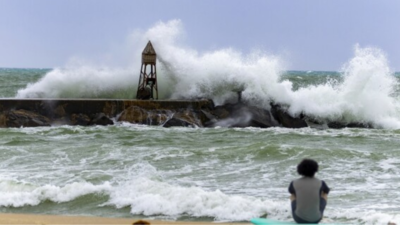
Hurricane Rafaela Category 3 storm, made landfall in Cuba on Wednesday, causing major damage and widespread power outages across the country. The storm had already impacted the Cayman Islands and Jamaica, bringing strong winds, heavy rain, and dangerous storm surges to these island nations.
Before Rafael hit Cuba, the government issued warnings and urged citizens to prepare. Schools and public transportation were shut down, and flights in and out of Havana and Varadero were canceled. Thousands of people in the western part of the island were evacuated, as reported by the Associated Press.
Forecasters warned Rafael could bring “life-threatening” storm surges, winds and flash floods.
“While conditions have improved on Grand Cayman, residents are advised to exercise extreme caution on the roads and near coastlines as rough seas and residual flooding risks may persist,” said the government in a statement.
“This is a night I don’t want to sleep through, between the battering air and the trees,” said Silvia Pérez, a 72-year-old resident of Havana preparing for the storm. “I’m scared for my friends and family.”
Experts have warned that Rafael could bring “life-threatening” storm surges, winds and flash floods.
As Rafael moved across Cuba, it weakened slightly to a Category 2 hurricane with winds of 105 mph. The storm is expected to weaken further as it moves towards the southeastern Gulf of Mexico. The US state department has adviced American citizens to reconsider travel to Cuba.
On Tuesday, Rafael caused power outages and flooding in Jamaica. The Cayman Islands also experienced power outages and school closures. The storm is expected to bring heavy rainfall to Florida and the southeastern United States later this week.
Rafael is the 17th named storm of the 2024 hurricane season. It’s arrival comes just two weeks after another hurricane hit the eastern part of Cuba, killing at least six people. The storm caused widespread blackouts, from which the island is still recovering.



















